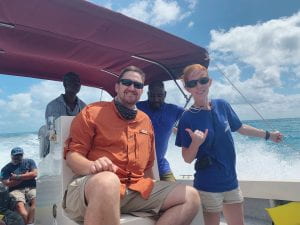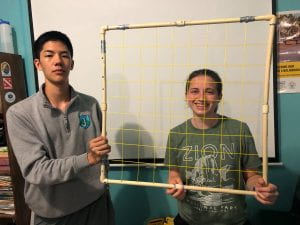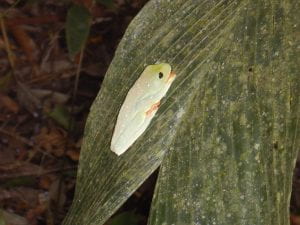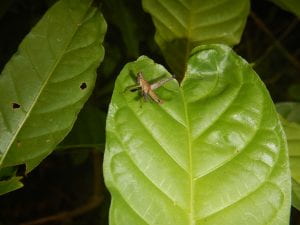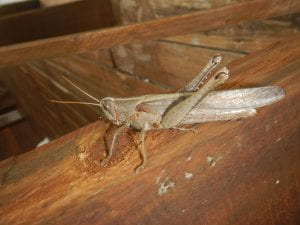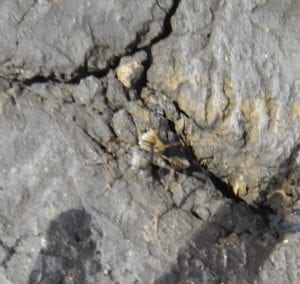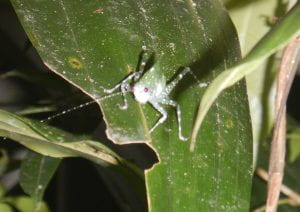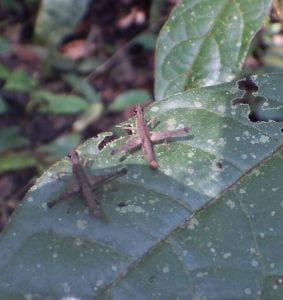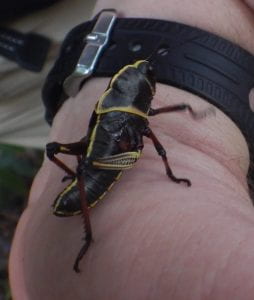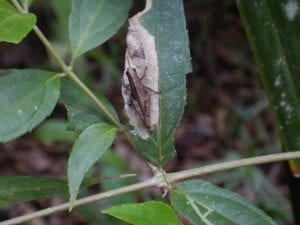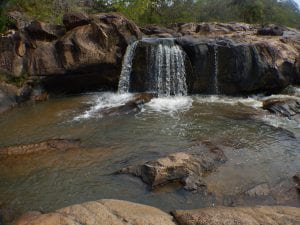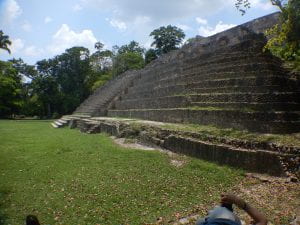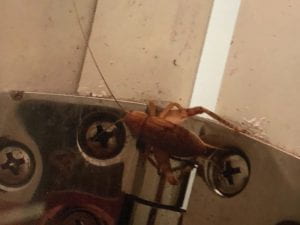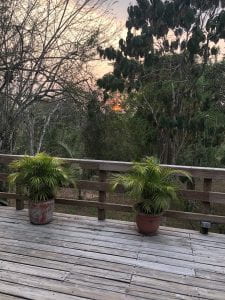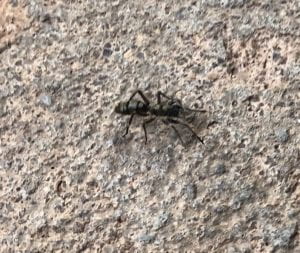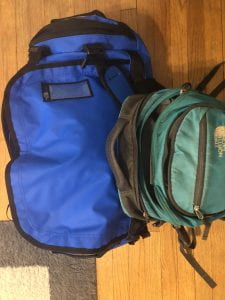Today was the busiest day at Las Cuevas so far. In the morning, we compared the plant diversity of a region disturbed by a hurricane a few years ago to an undisturbed area.
In the afternoon, we collected data to see if young Cecropia trees that are not yet colonized by ants have tougher leaves than those that are colonized by ants to avoid herbivory. Cecropia and Azteca ants form a symbiotic relationship where the plant gives the ants a home and carbohydrate source, and the ants protects the Cecropia.

The most interesting Orthoptera I saw was a large group of grasshopper nymphs in the morning. They looked like they were piled on top of each over and formed a ball when I first saw them. I think they were Giant red winged grasshopper nymphs (Tropidacris cristata) because of the yellow aposematic markings on one of them. I also saw a lot of crickets at night, one of which looked like the White-kneed king cricket (Penalva flavocalceata).


